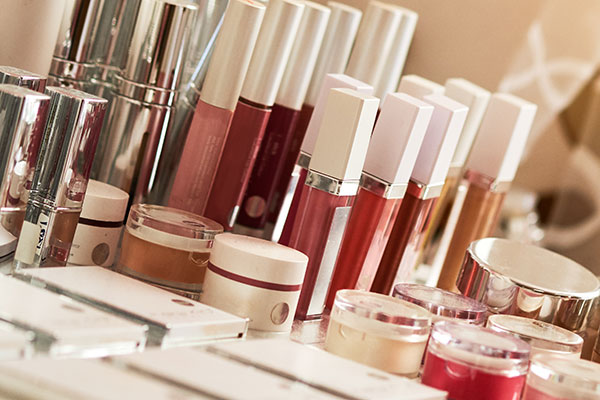 While it may at first glance appear to be a popular trend to avoid key ingredients in cosmetic products, do you understand the true impact that avoiding certain materials can have on your cosmetic formulations?
While it may at first glance appear to be a popular trend to avoid key ingredients in cosmetic products, do you understand the true impact that avoiding certain materials can have on your cosmetic formulations?
For example, there is no scientific reason to avoid using sulfates, PEGs, parabens or propylene glycol or even synthetic ingredients based on safety because all cosmetic ingredients, when used within regulatory limits, are safe when formulated properly and within those limits. Yet it has become a popular catchphrase and marketing terminology to avoid some of these materials because of fear campaigns designed to scare consumers into using – or avoiding – certain ingredients over others. But when you avoid sulfates in cleansing products, for example, you can dramatically reduce the performance, foam and cleansing power of the finished product while increasing the cost. When avoiding PEGs, you can miss out on some very important sensory and stability benefits. When using ‘all natural’ ingredients, you can miss out on some crucial performance benefits – sometimes to the point where your consumer just won’t want to repeat purchase your products or question its value in the first place!
While going ‘vegan’ and ‘halal’ does not cause too much compromise, combining a hefty ‘free from’ list with other restrictions, like ‘all natural’ and ‘palm free’, can sometimes significantly hinder your point of difference – for marketing purposes; performance – for consumer acceptance; jack up the price; and pose logistical issues. It can also dramatically impact the product’s shelf life and stability – so sometimes, avoiding the use of certain ingredients may actually be detrimental to your product’s performance and success.
In this video, Belinda Carli, Director of the Institute of Personal Care Science, looks at the TRUE impact of avoiding certain ingredients, especially in combination with other ‘restrictions.’ She talks you through the different ingredient functionalities and how going ‘free from’ impacts each ingredient category, as well as how the combination of ‘avoiding’ or ‘free from’ lists can sometimes significantly impact the possibility of creating an aesthetically suitable, stable and high performing cosmetic product. She also looks at the different types of product formulas created and how avoiding certain ingredients can have a negative effect for a brand and the products it brings to market. Finally, she talks you through the concepts to consider when determining the best ‘free from’ message for your cosmetic brand.
Find out the true impact of going ‘free from’ on your formula – and if it is the right thing for your brand after all – watch now!
To add natural and organic search filters to your Prospector account, upgrade today! Learn more
The views, opinions and technical analyses presented here are those of the author or advertiser, and are not necessarily those of ULProspector.com or UL Solutions. The appearance of this content in the UL Prospector Knowledge Center does not constitute an endorsement by UL Solutions or its affiliates.
All content is subject to copyright and may not be reproduced without prior authorization from UL Solutions or the content author.
The content has been made available for informational and educational purposes only. While the editors of this site may verify the accuracy of its content from time to time, we assume no responsibility for errors made by the author, editorial staff or any other contributor.
UL Solutions does not make any representations or warranties with respect to the accuracy, applicability, fitness or completeness of the content. UL Solutions does not warrant the performance, effectiveness or applicability of sites listed or linked to in any content.



You should also comment on the legal ramifications of “free from”. We have been fighting “free from” with a number of customers that want to be free from incidental contaminates such as phthalates. Phalates can be found in plastic water hoses, containers and we have even found them in the raw material storage containers in the lab. There are lawyers in certain areas who love to grab products that say “free from” and test them for the key words on the label such as phalate free, paraben free, formaldehyde free, etc. If they find even a few ppb in a product then it is technically mis-labeled and they can sue for damages which can be enormous in certain states with specific judges.
We always encourage our clients to promote what they do have, not what they do-not.
Thanks for sharing your insight, happy formulating!
Kind regards,
Belinda Carli
Dear Belinda,
It was high time that someone had the courage to voice many formulators think about all of these changes impacting raw material selections. In my opinion, with over 35 years formulator experience, most of it is driven by articles in magazines women like to read. These journalists write articles about ingredients without having a chemistry background and all of a sudden we are made to believe that the customer demands that certain ingredients are being voided. The average customer has no idea what these ingredients on the back label mean. Now the big cosmetics manufacturers take the lead in avoiding those ingredients and the smaller companies start doing the same thing. This is pure insanity.
Hi, Alexander:
Thanks for providing your support and input. It would be great if we can get more of the right information out there to consumers! Happy formulating.
Kind regards,
Belinda Carli